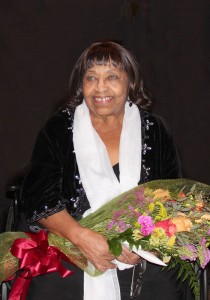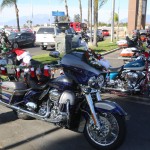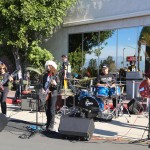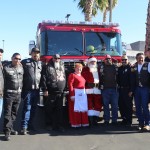Omarosa Manigault Newman, who has resigned under duress from her public liaison job at the White House, is leaving true to form – amidst a cloud of controversy and with sparks flying.
The White House has confirmed her resignation effective Jan. 20. The official White House reason was that she is leaving to pursue “other opportunities.”
“Thank you Omarosa for your service! I wish you continued success,” says a Dec. 13 tweet from President Donald Trump, who had handpicked Manigault Newman – best known for her first name only. A personal friend of Trump’s, they have known each other 14 years since her national television debut on his reality show, “The Apprentice.”
But the full circumstances surrounding Omarosa’s departure remain cloudy at best amidst numerous reports that she was actually fired or forced to resign amidst cursing and a heated confrontation with Trump’s Chief of Staff Gen. John Kelly. She has only conceded that there was a tense conversation with Kelly in the White House Situation Room. Since his arrival last July, Kelly had limited her access to the Oval Office, where she initially had the freedom to come and go.
On ABC, the only media outlet that has interviewed her since the resignation, the clearly angry Omarosa said reports that she was fired are “a hundred percent false.” But, then she added, “But when I have a chance to tell my story to tell – quite a story – as the only African-American woman in this White House, as a senior staff and assistant to the president, I have seen things that have made me uncomfortable, that have upset me, that have affected me deeply and emotionally, that has affected my community and my people and when I can tell my story, it is a profound story that I know the world will want to hear,” she said, leaving an obvious cliffhanger.
Omarosa was reached to obtain responses on issues raised in this article, but she declined comment due to the fact that she is still a White House employee until Jan. 20. She was only allowed the interviews with ABC News.
Black Republicans say Omarosa blocked them from jobs.
Meanwhile, Black Republicans claim Omarosa blocked them from jobs in order to maintain her status as the “only African-American woman… senior staff and assistant to the president” as she described herself on ABC. Her actual White House title has been assistant to the president and director of communications in the White House Office of Public Liaison.
But her actual job description appears not to have been clearly defined. In interviews with the Trice Edney News Wire Black Republicans blame her for blocking Black job applicants from the Trump administration – including Republican stalwart Kay Coles James, who was appointed Dec. 19 as the first African-American and first woman president of the conservative Heritage Foundation.
“I was blocked personally. Essentially, my file was pulled and I wasn’t deemed pro-Trump enough,” says Eugene Craig. “The official excuse was that I wasn’t pro-Trump enough although I was the sitting chair of the Maryland Republican Party.”
Sources said because of President Trump’s need for loyalty, that attribute – loyalty – was among the top considerations for key White House positions. Craig admits that he was a “never Trumper all the way”, but that was during the campaign. Craig says he noticed that when the time came for consideration for jobs and the broad banner of Republicanism, White never-Trumpers were given consideration where African-Americans were not.
“The flood gates were opened, but Omarosa held all of us to a different standard. She had say over a lot of the Black resumes. I know for a fact from promises that she made us directly.”
Craig says a January conference call with the Republican National Committee and Trump transition team was held “specifically for African-American activists and party loyalists.” He said, “During the middle of the call, she jumped on and bogarted on. And she came in and she made us these promises that this would be the most diverse administration in history. And she’ll help us with whatever we need and wherever we wanted to go into government and to shoot our resumes over to her and she gave us her official transition email. She said this administration has a goal of having 25 percent minority hiring. They wanted 25 percent of the work force to be Black and Hispanic…So she positioned herself as the end all be all for Black things; for Black people in the administration,” Craig said.
Ayshia Connors, a former deputy director of African-American engagement at the Republican National Committee, now a senior advisor to Rep. Brian Fitzpatrick (R-Pa.), agrees. She describes an initiative by The Joint Center for Political and Economic Studies and Insight America, an organization headed by former Republican Congressman J. C. Watts:
“There were hundreds, probably thousands of resumes of qualified individuals in the Black community that were ready and prepared to go into any administration no matter who won the election. And when President Trump got elected, all of those names were submitted and Omarosa literally trashed those names. Nobody got a call back. Nobody got an interview. Nobody was ever heard about again. People tried to go in. People were eager and willing to serve the President, willing to serve our country. But Omarosa, she didn’t want other Black Republicans there. She wanted to be the big shot. She wanted to be the only one. And so, everybody kind of just decided it wasn’t worth our times to keep dealing with it. And so, by February, people had just moved on from Omarosa and dealing with the White House and decided to start working with Congress and dealing some other policy matters.”
Connors added that Kay Coles James, former Virginia Secretary of Health and Human Resources under Virginia Republican Gov. George Allen and director for the United States Office of Personnel Management under President George W. Bush, received the same treatment.
“She was willing and prepared to go back into the government and to help the administration. But Omarosa was such a distraction and created so much drama and confusion that Ms. James just decided not to engage it anymore. So that’s what ended up happening. That’s why you only saw Omarosa as a senior Black Republican in the White House.”
In a brief interview with James upon her appointment as president of the Heritage Foundation, James was clear about why she did not go to work in the Trump White House.
“When Donald Trump said that he wanted to improve the urban areas and that he wanted to make the lives of minorities in this country better, I said, wow, if he wants to do that, I genuinely want to be a part of that and I was excited and hopeful the opportunity to come in,” she said. “But that opportunity never really afforded itself. I am told that I was blocked…I don’t have specifics about how that happened, but I was extremely disappointed that I didn’t have the opportunity to serve there.”
Connors said the clearest evidence that Omarosa was not going to work with other Black Republicans came in February when Omarosa was in charge of pulling together the Black History Month program for President Trump.
“During Black History Month, these credible Republicans such as Kay Coles James and J. C. Watts and Elroy Sailor, they tried to engage Omarosa.” Instead, Omarosa put an event together that included her personal picks of African-Americans, including Black Democrats, Connors said.
“She didn’t invite any of the prominent Black Republicans. In fact, we had folks calling us from the White House calling and saying, ‘Why aren’t your names on the list for this event?’ It was very evident from the beginning that she wasn’t going to work with us and that she was just going to do her own thing.”
Connors cited another event for Vice President Pence that was planned by Black Republicans to be held at West Point. “That was another example of Omarosa using her position in the White House to block that event as well. And that was actually the turning point for Black Republicans. We decided she was just too distracting too disruptive and we decided to focus our efforts elsewhere.”
On the record sources willing to speak in defense of Omarosa were difficult to find. But, high placed Republican sources say it is not possible that Omarosa could have made such powerful decisions without oversight in the White House – most likely the President himself. Other high Republican sources said James was offered positions, but Omarosa fought against any Black staff appointment that would be above her own.
Yet another rationale for why some Black Republicans seeking employment were rejected may have been because they had left the Republican National Committee Headquarters in protest against treatment by then RNC Chairman Reince Priebus nearing the end of the presidential campaign. Priebus then became President Trump’s first chief of staff and was likely adverse to hiring the same staffers who had left the RNC, one source said.
Christopher Metzler, an active member of the Black GOP Coalition, who has long worked Republican policy and strategy, had one answer when asked why there were no long time Black Republicans hired as White House staff. “It’s very simple. Omarosa,” he said.
“Somebody like Kay [Coles James] who could serve as a whisperer in the President’s ear like a Condoleezza Rice; like a Valerie Jarrett, was never given that opportunity. There was a lot of back and forth pertaining to that. And Kay said, “Well, it is not going to serve the President well for me to try to cut through this thicket. And as a result of that, she did not push it any further.”
Metzler concluded, “All of these things were blocked by Omarosa. At the end of the day, Omarosa is first and foremost a Democrat. She is not a conservative. She is not a Republican. She never has been. She is simply an opportunist. And that’s where we ended up.”
Black Republicans Do Not Necessarily Mean Black Representation; nor Justice
Dr. Ron Daniels, president of the Institute of the Black World 21st Century (IBW) and a long-time associate of Omarosa’s Youngstown, Ohio family, has had a unique view of Omarosa in the White House. He worked directly with her when she was a Democrat. He even named her a celebrity ambassador for IBW’s Haiti Support Project after she traveled with a group of journalists to document the level of disaster following the 2010 earthquake. His view in the midst of her departure from the White House is two-fold.
First, as it pertains to those Black Republicans who felt that they earned a position due to their loyalty to Black Republicans, “diversity does not equal representation of the Black community,” he said. “That’s one of the fallacies…Trump’s agenda is a negative agenda. Fact number one is the way he dogged President Obama, the way he talked badly about Mexicans, etc. Why would anybody want to associate with that administration in the first place?”
Citing pioneering Black Republicans such as Nixon’s Art Fletcher, known as “the father of affirmative action,” Daniels says modern day Black Republicans can hardly hold a candle to some of the Black Republicans who – instead of following the party line – stood for justice when it was needed most. “The brand of Republicanism that we have now is extremely out of step with the vast majority of Black people and the mainstream of Black aspirations and Black policy and the concepts of Black policy prescriptions.”
Because of his working with Omarosa and his affinity for projects that she led for Haiti and for children in the U. S., Daniels now sees what he believes to have been her true agenda based on her most recent situation.
“I think Omarosa, for whatever reason, is somebody who had been on the liberal side. She had supported Hillary Clinton…She had been in Democratic politics and all that. I think Omarosa saw an opportunity to advance her own interests and that is why she was blocking everybody else in terms of the Republicans who wanted to get close. She wanted to be the Queen bee,” Daniels said. “She wanted to be able to fire folks, metaphorically speaking, or block people. That’s not a good thing. But the idea that if she had opened the flood gates of somehow having more Ben Carsons or more Clarence Thomases or people like that, [that would not have been a good thing either]. But I don’t think Omarosa was there advocating. It was really stunning to see her make that transformation.”
Black Republicans are not the only ones who say they were rejected by Omarosa
American Urban Radio Network reporter April Ryan, a White House correspondent who has covered four presidents, confirmed that now former Trump press secretary, Sean Spicer, told her that Omarosa had asked him to “stop calling on me” during press briefings. Had he adhered to that request, it could have blocked important information and coverage on behalf of millions of African-American listeners to AURN radio stations across the nation. Ryan says Omarosa also tried to get her fired by calling her boss at AURN.
Many of Omarosa’s previous friends and associates, who rejected Trumpism, say they were also rejected. Daniels says he was one of them.
“Omarosa is my home girl. My roots are in Pittsburg, Pennsylvania and most of my adult life was spent in Youngstown, Ohio,” her hometown, he recalls. “I had my own television show in Youngstown, Ohio for 18 years. She said she grew up watching me and was inspired by that. I saw the good work she was doing with children in Compton and that she had a progressive vision. So we forged a friendship,” he said. “All of that was positive.
Then, all of a sudden Trump came along and I saw her in and around Trump and I became very nervous. She’s my homegirl. I cared about her. So at one point, I just sort of, as an elder, a friend, I just sort of called her to say, ‘Be careful. You seem to be getting very close to Donald Trump and I don’t think…’ And she just sort of went off on me, kind of like, ‘You don’t need to be telling me, nobody needs to be telling me what’s going on. I know what I’m doing. And somebody needs to be able to talk to him. And that was it. I just said bye because I did not want to see her become what she has now become in the Black community – a pariah in the Black community.”
There are many such stories told by former friends. But the truth about Omarosa’s tenure and final days at the White House is yet to be made clear.
NNPA Interviewed Omarosa last fall, but is still awaiting Trump interview that she promised.
Ben Chavis, president/CEO of the National Newspaper Publishers Association, said he interviewed Omarosa last fall in her White House office, located in the Old Executive Office Building. At that time, shortly after the Congressional Black Caucus Annual Legislative Weekend, there was no indication that she would be leaving, Chavis said.
However, he speculated that, based on the content of the interview – which he said has not been published – she may have been pressing for diversity too much.
“She indicated broadly her determination to press diversity and inclusivity issues. She’s always maintained that posture,” Chavis said. “I think that’s probably one of the things that probably got her in trouble in the White House is that she probably was pressing for more diversity,” Chavis said.
In an off-the-record meeting with several hundred Black leaders, including Chavis, during the Trump transition last January, Omarosa said NNPA would get the first interview with President Trump, a promise she later denied despite multiple sources that confirmed the conversation. In the recent interview, she indicated that the Trump/NNPA interview was still possible, Chavis said. He said NNPA will continue to request the interview with Trump.
What happened in the final days of Omarosa’s tenure and the detailed reasons for her departure from the Trump administration are far from clear.
“There are two sides of the story – Omarosa’s story and those being told by other sources are two completely different stories,” said Ayshia Connors. “But based on her patterns of erratic behavior and disruptive behavior, it wouldn’t surprise me at all if she was confrontational with General Kelly and things were played out the way they were reported to have played out – outside of her story.”
 Westside Story Newspaper – Online The News of The Empire – Sharing the Quest for Excellence
Westside Story Newspaper – Online The News of The Empire – Sharing the Quest for Excellence






